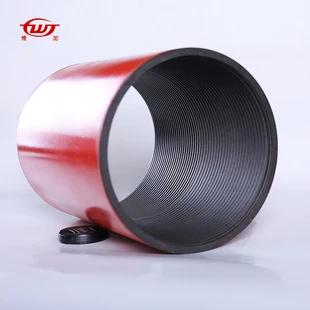casing collar
The Importance of Casing Collars in Oil and Gas Operations
In the oil and gas industry, the integrity and success of drilling operations rely heavily on a myriad of components, among which casing collars play a crucial role. Casing collars are metal rings attached to casing pipes, which are essential for maintaining the structural stability of a wellbore during and after drilling. This article explores the significance of casing collars, their functions, types, and best practices to enhance their performance in oil and gas explorations.
Understanding Casing Collars
Casing collars are typically located at intervals along the casing string, which is a series of steel pipes inserted into a drilled well to provide stability and prevent the wellbore from collapsing. These collars serve multiple purposes they provide a connection point for casing sections, act as a stop for cement during the cementing process, and help prevent the casing from snagging during installation.
The design and construction of casing collars ensure that they can withstand the extreme pressure and temperature conditions encountered at various depths in the earth. They are manufactured following rigorous industry standards to ensure that they meet the safety and performance requirements necessary for efficient drilling operations.
Functions of Casing Collars
The primary function of casing collars is to provide mechanical support to the casing string. They are instrumental in ensuring that the casing remains securely in place, preventing potential issues such as wellbore collapse or migration of fluids between different geological formations. Casing collars also facilitate cementing operations, which are critical to sealing the annular space between the casing and the wellbore, thus preventing leakage of hydrocarbons into surrounding formations.
Additionally, casing collars can help in isolating different zones within the wellbore for testing and production purposes
. By using specific collar designs, operators can create pressure barriers that enable them to manage the flow of hydrocarbons from certain zones, enhancing the overall efficiency of resource extraction.Types of Casing Collars
There are various types of casing collars, each designed for specific applications and environments. Some of the most common types include
casing collar

1. Standard Collars These are widely used in most drilling applications and provide a reliable connection between casing sections.
2. Threaded Collars These collars have threaded ends that allow for easy connections and disconnections during the installation and maintenance of casing strings.
3. Coupling Collars Designed to join two lengths of casing, coupling collars come in various sizes and materials to suit different drilling requirements.
4. Centralizers Although primarily used to position the casing centrally within the borehole, many centralizers also function as collars, ensuring that there is an adequate space for cement around the casing.
Best Practices for Casing Collar Installation
To ensure the operational efficiency of casing collars, adhering to best practices during installation is essential. Operators should always conduct thorough inspections of the collars before installation to identify any defects that could compromise the integrity of the casing. It is also crucial to follow manufacturer guidelines regarding torque specifications during the connection process, as over-tightening can lead to deformation, while under-tightening may create gaps.
During the cementing process, maintaining proper pressure and following the recommended cement composition is vital to ensure effective sealing around the casing collars. Post-installation testing, including pressure tests, should also be conducted to verify the integrity of the casing and collars.
Conclusion
Casing collars are fundamental components in the successful and safe drilling of oil and gas wells. Understanding their roles and adhering to best practices can significantly improve the efficiency and safety of drilling operations. As the industry continues to evolve with advancements in technology and increased emphasis on sustainability, the importance of reliable and high-quality casing collars will remain a cornerstone of effective resource extraction.
-
Unlock the Benefits of Pup Joints for Your OperationsNewsOct.31,2024
-
The Quality of Casing Couplings from ChinaNewsOct.31,2024
-
The Essential Role of Pup Joints in Drilling OperationsNewsOct.31,2024
-
The Benefits of Tubing Couplings for Your ProjectsNewsOct.31,2024
-
Enhance Your Drilling Operations with Tubing Pup JointsNewsOct.31,2024
-
Elevate Your Drilling Operations with Tubing CrossoversNewsOct.31,2024







